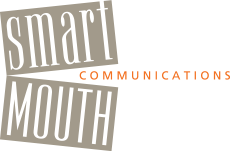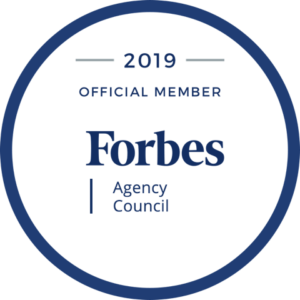by Beth Levine | Aug 22, 2011 | Just Mouthing Off
Using figurative language – e.g. stories, analogies, metaphors – and painting a picture in people’s minds can literally save a thousand words. Certain complicated communications, whether it be a business situation, a technical explanation, or a recommended solution, are often hard to express and even harder to understand with just layers and layers of words and sentences and paragraphs.
If you have a complicated communication, spend a couple of minutes in your preparation time thinking of a story with parallel relationships to your situation, or an analogy that is commonly understood, or a metaphor that presents a more tangible image of what you’re trying to explain or propose. If you can do that, you will save yourself and your audience the trouble of sifting through a lot of words they won’t remember nearly as well as they will the picture you draw for them verbally.
Figurative language has impact … literally!
by Beth Levine | Aug 15, 2011 | Just Mouthing Off
Today’s blog is one of those periodic reminders (yup, I’m still on it!) that too much information, or the wrong kind of information, or information that’s really only interesting to you can kill a speech or presentation.
The kind of info and how much info you bring to a talk is completely driven and determined by careful, thoughtful consideration of your audience. Some specific questions can help:
Will they be in the room by choice, or do they have to be there? The answer to this question will help you prioritize and be extremely selective about amounts of info. And the amount of time you spend sharing info. If they’re in the room by choice, you have a heck of a lot more time and latitude. If not, well then, you do the math!
What do they really care about? Once again, not what do you really care about, but what do they really care about? Okay, so your topic is one thing, but is that what they really care about? Or is there something deeper? For instance, let’s say you’re a doctor addressing a group of senior citizens, and your topic is ‘Geriatric Healthcare Trends’ … hmmmm, I’m going out on a limb and guessing that one of the issues they really care about is cost, $$, healthcare reform. Whenever possible, think a little more deeply and anticipate your audience’s needs, interests and expectations surrounding your topic.
Where are they in terms of knowledge or sophistication or interest level? It’s tricky at times, but talking either over or under an audience is a turnoff. And talking about things that excite you but may not be at all interesting to your audience is also alienating. Let’s say you’re technically savvy and speaking to a general audience about some hot new phone app and how it works, you may want to use analogies or metaphors to convey your information in an interesting and understandable way.
Info comes in lots of varieties – e.g. data, statistics, examples, anecdotes, even analogies – and is used to support a point, a message. Let your audience be your guide when you’re selecting the quantity and quality of your info.
by Beth Levine | Aug 8, 2011 | Just Mouthing Off
My 10 am client canceled this morning. At 9:45. “Something came up.” Surgery? Family emergency? His boss called him in at the last minute? Not sure. “Something.” It was his third cancelation in less than a month.
If I had to guess, “something” would be along the lines of avoidance … fear, dread, or oh-please-anything-but-speaker-training! Even oral surgery. Understandable. Totally. But only understandable when it’s avoidance of an actual audience of 100. Avoidance of the training though? That just digs the hole deeper. Training demystifies the process of public speaking and therefore significantly reduces the need for avoidance. And we have fun in the training; this client’s colleagues all have done it and they had fun. Here’s what two of them had to say after their sessions:
“I wanted to let you know that I found this session very interesting. I went to it out of duty, but after it was completed, I thought it was time well spent.”
“I found the session interesting and it did get me to think about the topic in a different way.” (And this guy was very late to the session … low priority perhaps?)
Yup, they come into the room somewhat reluctantly, but they leave the room with a new perspective, with useful tips and tools. They didn’t say in their emails that they had fun, but I can assure you there were lots of smiles and laughs.
Avoidance is probably the number one killer of public speaking and speakers. But that’s why there’s training available… to arm folks with the tools and equipment they need for when it’s the real deal and they actually have to get up and be a speaker. Trusting that the training can help you become a better speaker is kind of like driving down a steep hill in the snow and trusting that your all-wheel drive will help you get to the bottom safely. Speaker training builds in the same kind of confidence as your all-wheel drive.
So, accept the gift of training if it’s offered, don’t avoid the support and assistance. The training will give you some super easy tips and tools, and then off you go, downhill in the snow. You can do it. It’s safe. Fun too.
by Beth Levine | Jul 27, 2011 | quote
“It usually takes me more than three weeks to prepare a good impromptu speech.”
– Mark Twain
by Beth Levine | Jul 18, 2011 | Just Mouthing Off
“When I’m dancing, that’s what I’m doing.” – Merce Cunningham
How perfect! I recently was exposed to the philosophy and technique of modern dance master Merce Cunningham, and this quote of his grabbed my attention. The suggestion that everything else fades into the background and that he’s immersed and fully present in what he’s doing is instructive for all of us …
Being present when you’re communicating actually involves you and another party – the audience, of course. Being present as a speaker means being willing to “listen dynamically,” with all five senses, to your audience so you can respond, adapt, be relevant, and stay in the moment. And ultimately connect. It means clearing your head of all other noise, including your own ego, in order to be there for and with them.
Rather than thinking about your exact words, all the specific material you want to cover, whether you’re forgetting something, and whether or not you’re going to actually survive (ha, I caught you!), envision being engaged and being present with a person or a group of people. Envision yourself with them; talking to them, maybe even literally talking with them, but definitely not at them. Envision yourself seeing them, sensing their level of receptiveness … without allowing it to be personal and about you (caught you again!). And if that doesn’t help, then at least envision yourself being present enough that you’re open to changing tacks if necessary – e.g. inviting Q&A earlier than planned, turning off the PowerPoint and telling a story, breaking up your talk and asking the audience to reflect back to you what they’re hearing and understanding.
So that when you’re communicating to people – which is, by definition, a two-way street – that’s what you’re doing. And then let everything else fade away …



